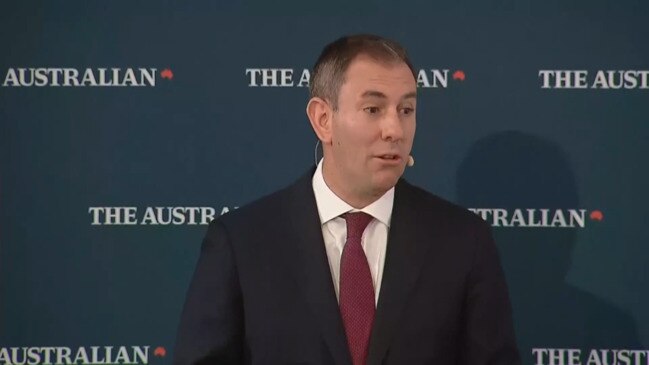
An interview with the then environment minister, Ros Kelly, on her upcoming trip to the Rio Earth Summit had gone well but I was horrified to find not a single word of the half-hour discussion had been recorded. My notes were good enough for the next day’s news story but the weekend feature would be an ordeal.
And Kelly’s hint that Australia was planning to phase out leaded petrol was playing on my mind: How could I afford to replace my 1969 Valiant?
The Rio meeting was a big deal and Kelly revealed Australia would sign the convention on biodiversity, to protect the world’s plants and animals. But buried in the June 3 story was something that would dominate news for decades to come.
“The US has signalled that it will sign the Climate Control Convention (an agreement on reducing carbon-dioxide emissions believed to cause global warming). This was supposed to be the summit’s showpiece but ... it has been watered down under pressure from the US administration and does not include targets or deadlines,” the story said.
Rio established the UN Framework Convention on Climate Change and, at its birth, set the tone for the international and domestic political brawl that would follow.

In Australia the energy wars led, either directly or indirectly, to the fall of two opposition leaders and three prime ministers. Despite the fervent hopes of many, the war is not over. The major parties might now agree on a net-zero target for greenhouse gas emissions by 2050 but the battleground has shifted to how we will get there.
It could have been very different. It is another distant memory but in 2007 both the Labor and Liberal parties took plans for a carbon price to the election. Prime minister John Howard’s was the result of a deathbed conversion, as he sank in the polls and faced the inevitability of defeat. His climate plan was an acknowledgment that his fortunes had fallen in part because of his refusal to sign up to legally binding targets for emissions cuts that emerged from the third UN climate summit, held in the Japanese city of Kyoto in 1997.
Howard would later say he had been caught in a perfect storm: Australia was deep into the Millennium Drought, the bushfires came early and then Al Gore toured the country with his film, An Inconvenient Truth. Drought and fire coalesced as climate change in the minds of many voters and Howard was a man out of time.
After the election the clock was also ticking on the cross-party agreement on a carbon price that would be critical for Australia to make an orderly transition to low-carbon energy.
As opposition leader Brendan Nelson began to equivocate on the Liberals’ commitment to carbon pricing, Malcolm Turnbull exploited it to depose him in September 2008. Turnbull then tried to drag the Coalition to support Labor’s Carbon Pollution Reduction Scheme. The Liberals were divided but he was staunchly opposed by the Nationals.

It should never be forgotten that it was the combination of extremes, the Nationals and the Greens, that combined to sink the last chance this nation had to get a political consensus on climate policy. Ironically, the Greens’ mantra then was that Labor’s plan would “lock in failure”.
Australian politics broke on December 1, 2009 when Turnbull lost the Liberal leadership to Tony Abbott by a single vote, as the party tore itself apart over climate policy.
The climate of politics shifted radically. It began to rain, fear of global warming abated in the community and Abbott, a stone cold political killer, exploited every weakness. Kevin Rudd panicked and retreated from his climate plan, despite describing global warming as “the greatest moral, economic, and social challenge of our time”.
He would learn that you can abandon a lot of policies in politics but to be seen to abandon principle is fatal. His poll numbers tanked and under cover of darkness on June 23, 2010, his party abandoned him. At a federal level, failure on climate and energy policy was now well and truly locked in.
But, in a federation, failure is usually shared. The story of the states is also a sorry one, but for the opposite reason: their ambition is trying to outrun physics. The first sign of trouble was when the entire state of South Australia blacked out in 2016. In May that year the last coal-fired power station closed in SA and the state boasted 40 per cent of its generation came from renewable sources.
This columnist reported that SA was the canary in the coalmine before the blackout and, in its wake, said high penetrations of wind and solar had made the state’s electricity system less secure. This was greeted as heresy but note two things: after the “black system” event the SA government built an emergency diesel generator and the Australian Energy Market Commission found “loss of physical inertia was particularly important in the events leading to the South Australian black system event”.
The states did not heed this as a warning to hasten slowly. Instead they launched a virtue bidding war declaring ever bigger targets for weather-dependent generation. Victoria’s target is 65 per cent by 2030 and 95 just five years later; Queensland wants to hit 70 in the next eight years and 80 per cent by 2035. NSW and Victoria have joined in the demonisation of gas by effectively banning its development, while local opposition rises to large-scale wind projects and the thousands of kilometres of transmission lines that will be needed to connect them.
It all adds up to a ramshackle transition that has prompted the Australian Energy Market Operator to issue warnings that blackouts loom, as reliable electricity supply slips below demand. And despite the repeated claims of politicians, activists and lobbyists the rise of renewables has yet to deliver lower retail prices.
Federal Labor went to the 2022 election claiming electricity prices would fall by $275 by 2025. It is now handing out $300 payments to help with spiralling bills. Queensland is forking out $1000 to residential customers. The likelihood of rising energy prices was obvious to anyone following what is happening in similar transitions around the world, and the cost of yet-to-be-built transmission lines can only force prices higher.
It is impossible to predict the future but this much seems certain. Rapidly transitioning the electricity system to mostly weather-dependent generation won’t be easy or cheap, and the energy wars have a long way left to run.






It was Tuesday, June 2, 1992 and I was having a bad day.